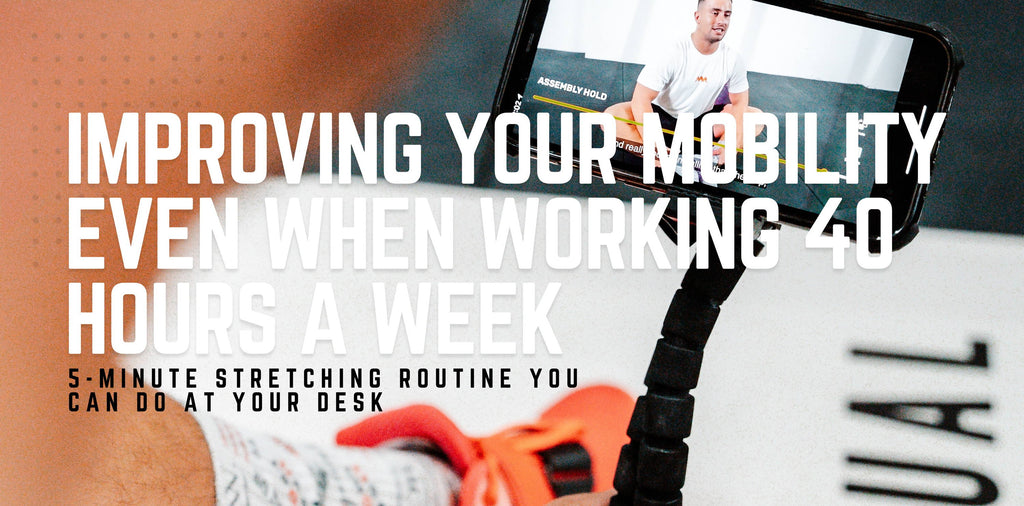Common Mistakes when using Resistance Bands & How to fix them

There’s no doubt about it, resistance bands are an incredible tool to use before, during, and after workouts. They offer a plethora of benefits and can be used for strength and mobility training, building muscle, and are a good warmup and cool down accessory.
Despite how simple they look, there seems to be a lot of common mistakes that arise when using them. Let’s highlight these mistakes and address how they can be fixed so that your future run-ins with resistance bands aren’t so complicated.
1) Having slack in the band or overstretching the band
The most common mistake when training with resistance bands is not having the correct amount of tension in the band. Fail to correct this error and you’ll completely destroy any chance you had of making progress (sorry to disappoint!) So let’s get this right…
There should always be tension in the band. This means that even at the end or the beginning of the range of motion, your muscles are always working.
If you were to have too much slack in the band, there would be no resistance and so your muscles wouldn't have to do any work. At this point you may as well call time on your workout because you’re not doing anything as a way of improvement.
At the opposite end of the spectrum, you have those who overstretch the band. Although less common, this should be avoided. All resistance bands have a limit. Exceed the limit of the band you’re using and you risk tearing or breaking the band.
To eradicate this issue, always ensure to check the maximum stretch length for the bands you’re using.
Want To Improve Your Mobility? Get Instant Access To This Easy 5 Minute Flow To Loosen Up Anywhere
Enter your email below to get this exclusive video direct to your inbox
2) Failing to anchor the band properly & choosing incorrect anchor points
One of the biggest pros of using resistance bands is their portability. You can use them at the gym, at home, or take them on the road with you - no problem! That being said, wherever you decide to use your bands, you must be careful about where you anchor them.
If you were to choose the wrong anchor point, you would risk the band flinging off and hitting you in the face (Ouch! You've been warned!) For this reason, it's important to choose your anchor point wisely. Make sure that you choose a strong, sturdy object to avoid risking getting hurt.
Many people decide to use a door as an anchor or to loop the band around an object. When looping the band, check that the object of choice doesn't have sharp or rough edges that could damage the equipment.
3) Not checking your band for damages
This may sound like common sense but often band-users fail to do this, and before you know it, their band has ripped on them mid set. All could have been avoided if they were to just check for damages beforehand!
It doesn't need to be said, but if you’re not checking the band for malfunctions before use, you risk injuring yourself. Although many bands are made of extremely robust material, they do eventually wear out.
To not fall victim to this fate, make checking your resistance bands for any damage part of your routine. If you find any damage, avoid using them.

4) Using the incorrect resistance
Before each exercise in your workout, be sure to select a band strength that works best for you. If the band has too much resistance, you risk having bad form and injuring yourself. But on the flip side, a band with a resistance that is too little won't give you enough stimulus for your muscles to adapt.
So, how do you choose the right resistance?
This depends on the body part you're working and the specific exercise. In contrast to weights, resistance bands don't have a fixed resistance. Instead, they have a "linear variable resistance". This means that the more you stretch a band, the more resistance it will produce.
Every band has a range and not a fixed resistance and so the next heavier band could be way too much resistance.
This leads nicely onto the next common mistake…
5) Using only one resistance band for the whole body
Getting a set of resistance bands instead of a single band is one of the biggest favours you can do for yourself. This will give you more freedom with your training as you'll have the right resistance level for every body part.
Each of the muscles in our bodies have different strengths and so require varying levels of resistance to train. Using just one band for your whole body would be suboptimal and you wouldn’t see much progress.
We offer a set of resistance bands with different resistances so that you can choose a band as per the strength of the muscle that you're working. If you haven’t already, check out our Mobility Manual band set here.
6) Inconsistent tension throughout your reps
It's not rocket science: for a resistance band to start offering resistance, you have to stretch it. But the only way to ensure that your workout is effective is by keeping the tension steady throughout all your repetitions.
That means slow and steady reps. You should be fully in control of the rep while you pull it, and whilst it goes in the opposite direction too. Fail to do this, and you'll only be doing half reps which will have little effect on your muscles.
If you’re looking to upgrade your current resistance bands, check out the Mobility Manual Band Set here.


